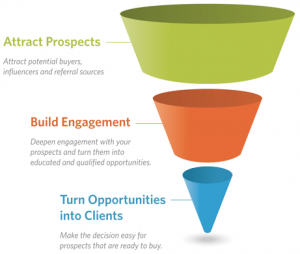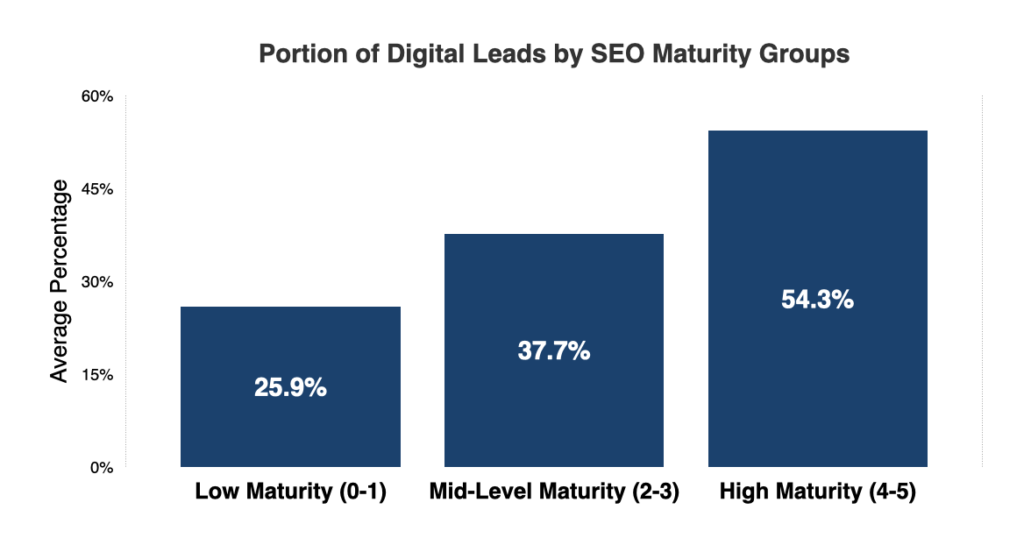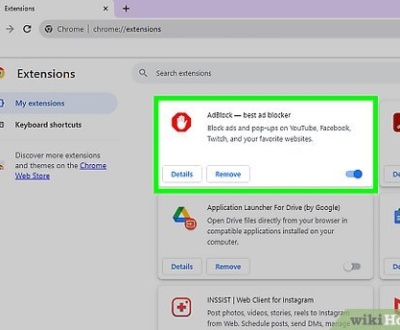The Best B2B Marketing Strategies to Grow Your Business
- December 12, 2022
- Digital Marketing, Inbound Sales, Lead Generation, Outbound Sales, Sales
I personally believe it is much easier to turn a B2B business into a successful one when compared to a B2C company. This relies solely on B2B Marketing and your ability to drive results straight from the prospects.

B2C requires a lot more time for building brand awareness and for building a community that can spread the word about your solution or services. The even harder part is that you’re selling to an individual and emotions can get in the way as well as the amount of money they have available.
In B2B you can find a corporate email quite easily, send a cold email which someone isn’t offended by as it is their work email and you can engage in a conversation about something that will help them and their company but they will need to spend the organizations money…
Much easier, right?
Why analyze Marketing Strategies for B2B Marketing?
When some firms think of B2B marketing strategies, they think primarily of direct and outbound techniques—marketing messages that you might send straight to clients or prospective buyers. In this approach, the goal is to be compelling and persuasive enough that the audience responds to the offer and seriously considers your services.
Techniques like these certainly have a place in your marketing tool belt. But the world of B2B marketing strategies has expanded, and the behavior of professional services buyers has changed. Today’s buyers are nearly as likely to turn to search engines for answers to their work-related challenges as they are to ask a colleague or connection for a referral.
This evolving marketplace has broadened the range of B2B marketing strategies at your disposal. So staying competitive today means taking full advantage of a wide spectrum of strategies.
You may wonder, though, which ones are essential for success in today’s hyper-competitive environment? In this article, we will explore ten fundamental B2B marketing strategies that will not only help your firm keep up, but help you get ahead. First let’s define exactly what we mean by B2B marketing and examples of how it looks in action.
What is B2B Marketing?
B2B marketing consists of the series of strategies and techniques used by a firm to effectively reach, nurture and sell their products and services to other businesses. In B2B marketing, the buyers are often c-suite or director-level professionals at other companies. Therefore, B2B marketing is different from other kinds of marketing.
One key difference when businesses buy from other businesses is how there is often a longer sales cycle. Buyers are looking for solutions that solve complex challenges related to their businesses. So effective B2B marketing is challenged with providing relevant, helpful and persuasive content that attracts the attention of buyers at all stages of possible interest. Let’s explore how this looks practically with some examples.
B2B Marketing Examples
We simplify the concept of B2B marketing by thinking of it as a three-tiered funnel. In this section we’ll explain each tier and provide examples of how B2B marketing techniques fit into the mix.

At the top tier of the marketing funnel you have a potential universe of buyers who are generally unaware of your product and service offerings. B2B marketing activity at this top tier employs techniques that broaden the visibility of your brand and attract the right kind of leads to engage further with your brand. These leads could be potential buyers, referral sources, or other influencers who could amplify your visibility.
An example of B2B marketing at the top of the funnel might be an expert from your firm who attends, networks at, and speaks at a top industry conference where your firm’s potential buyers gather. Another example would be to submit a series of articles to an online publication that’s widely read by your target audience. Remember, the goal of B2B marketing at the top of the funnel is not to start closing deals! The objective is to increase your visibility and provide a pathway for leads to take the next step of engagement.
Speaking of engaging your potential buyers, that is what the middle tier of the B2B marketing funnel is all about! If there is one section of the funnel that is underutilized, it’s this one. There is a temptation for marketers to rush potential buyers into a sales pitch. But not all buyers are ready to make a purchasing decision today—some requiring months or even years before they’re positioned to act. So the middle of the funnel is where B2B marketers focus on nurturing and engaging their audience over a sustained period of time.
Examples of middle-funnel B2B marketing usually provide insightful and helpful resources to potential buyers. Webinars are a great example of middle of the funnel B2B marketing. In a live webinar, a potential buyer is given an opportunity to engage directly with your firm’s leading experts in a no-pressure environment where they can learn and ask questions. The buyer gets to experience your expertise and it’s usually easy to take the next step, if they are ready, and speak to someone on your team.
Finally, a buyer reaches the bottom of the B2B marketing funnel when they raise their hand and indicate that they are ready to speak with a representative from your firm about one or more of your solutions. We consider this moment a true B2B marketing lead. At this stage of the funnel, B2B marketers are responsible for preparing those who close business deals in their organization with the materials they need to effectively communicate with the buyer.
Now that we’ve defined what B2B marketing is and how a B2B marketer needs to consider all three tiers of the funnel, let’s explore the ten essential B2B marketing strategies you can implement to help your firm get ahead of the competition.
B2B Marketing Strategies
1) RESEARCH
Research is the bedrock of any modern marketing effort. From marketplace research to brand research, detailed scientific studies will help you make more informed decisions. They’ll give you an objective basis for your marketing and provide you valuable baselines for measuring your results.
By conducting research, you’ll know your clients better — which puts you in a position to serve them better. Market research also gives you insight into how your processes are performing. You’ll know which aspects of your firm are performing most successfully and develop a better understanding of which services you should offer.
The impact of research is clear. Our own studies on the impact of research have shown that firms that conduct systematic research on their prospects and clients grow three to ten times faster and are up to two times more profitable than peers that don’t pursue research.
2) NICHE-DRIVEN STRATEGY
One of your most important business considerations – period – is specialization and niche targeting. Our research has repeatedly shown that the fastest-growing firms tend to be specialists in a carefully targeted niche. This should be an area of the industry that you understand thoroughly, a space in which you can become an undisputable expert and leader.
Specialization makes all of your marketing efforts easier, because it tends to define exactly what you do and immediately distinguish you from the competition. A specialization is a differentiator that proves itself.
3) A HIGH PERFORMANCE WEBSITE
In today’s professional services marketplace, your firm’s website is one of your most crucial assets. It is much more than a digital billboard or brochure, as some firms believed in the past. A successful website is the hub of a firm’s online presence and an information-rich projection of its expertise into the marketplace.
Your website is a critical tool for building visibility. Potential clients search online to find service providers, and they need to be able to find your firm’s website in order for you to have a chance at winning their business. Plus, your website enables you to demonstrate your firm’s expertise and become well-known throughout the marketplace.
Our research paints a clear picture of the importance of a professional services firm’s website. In fact, 80% of people look at website when checking out service providers – the most commonly used information source by far.
And as new visitors reach your site, robust educational content and carefully targeted offers can drive leads to closer and closer engagements, eventually bringing qualified leads straight to you. The process of nurturing leads through content is illustrated in the funnel graphic we’ve already discussed earlier in this article.
A second component of your website you need to consider is design. Web and graphic design can influence your audience’s perceptions, aid recall, and swiftly and intuitively differentiate a business.
The power of design to engage audiences is often under appreciated — which means it offers a tremendous opportunity to set firms apart and convey the credibility firms needs to thrive.
Finally, another increasingly essential consideration for your website is its usability across a wide range of devices, including mobile. Responsive design, which allows your website to adapt to suit a user’s device, has become a key feature as more people use mobile devices to do business.
4) SEARCH ENGINE OPTIMIZATION (SEO)
As we alluded to in the previous item, your target audience has to be able to find your website for it to be effective. That’s where search engine optimization plays an important role.
This is such a key piece of the online marketing puzzle that in our studies, high-growth firms list it as a very effective digital marketing technique available to them. And in one of our most recent versions of the High Growth Study, we saw that higher levels of SEO maturity seemed to translate into a greater proportion of digital leads. This same study showed a similar correlation with higher SEO maturity and increased profitability, most likely because digital leads usually cost less to generate.

Though SEO is a complex and evolving discipline, it ultimately consists of two primary components.
On-site SEO uses targeted keyword phrases to communicate the concepts on your site that matter to your audience. These keyword phrases typically focus on your services and expertise.
The purpose of on-site SEO is to communicate to search engines what your website is about. This allows search engines to produce more relevant results to searchers. And when audiences search for insight on your area of specialty, they’ll find you.
Off-site SEO takes the form of links to your website, either through outside engagement or guest articles in other publications, for example. These efforts work to increase your site’s authority as a widely recognized leader on your topic.
As more high authority and relevant websites link to your website, search engines will begin to see your site as more credible – resulting in higher rankings.
5) SOCIAL MEDIA
If you needed any more proof that social media is here to stay for professional services firms, we’ve got you covered. Our research has found that over 60% of buyers check out new service providers on social media, making it a more commonly used source of information than formal referrals and recommendations.
Even the nature of referrals has changed in the wake of social media. A recent study on referral marketing has found that 17% of expertise-based referrals are made on the basis of interactions on social media. Put simply, social media is an accelerator for the reach of your reputation, expertise, and content. It allows you to network and connect with valuable contacts and influencers, as well as monitor your brand by social listening.
6) ADVERTISING
There are a number of platforms on which your firm can advertise effectively:
- Industry publications and websites
- Social media
- Search Engine Marketing (SEM) – Google Ads, as well as Bing and Yahoo
- Retargeting – A cookie-based technology that uses a simple JavaScript code to anonymously “follow” your audience across the Web and serve relevant ads
Advertising doesn’t just promote your services – it can also play an important role in driving content downloads, increasing both your expertise and visibility.
It’s important, however, to use forms of advertising best-suited to professional services. LinkedIn, retargeting, and other industry-focused advertising tend to work best, because they allow you to most directly target appropriate industry audiences, which leads to more conversions, higher click-through rates, and lower cost per download.
Search engine marketing (SEM), on the other hand, often can be more expensive and harder to target for professional services’ purposes. Similarly, Facebook ads tend to be less effective because the platform is used at a lower rate by professional services buyers than other social media networks..
However, it’s important to remember there are many variations of each of these advertising types. Professional services firms might find them more or less successful depending on budget, ad purpose, targeting, and industry niche.
7) REFERRAL MARKETING
We mentioned that the nature of professional services referrals has changed – and this has major implications for your B2B marketing strategy. Our studies of referral marketing strategies in professional services have revealed an important new facet of the practice – over 81.5% of providers have received a referral from someone who wasn’t a client.
Where do these referrals come from? The vast majority are based on a firm’s reputation for specific expertise.
By using content marketing in conjunction with the rest of the tactics in this list, you can build a brand with a widespread reputation for specialty in your area – and an understanding of your expertise even among audiences that haven’t worked with you directly. This brand recognition can lead to referrals and new business.
8) MARKETING AUTOMATION, CRM, AND LEAD NURTURING
Marketing Automation: Marketing automation replaces high-touch, repetitive manual processes with automated ones – supported by technology solutions. It brings together all of your online marketing channels into one centralized system for creating, managing, and measuring programs and campaigns.
As with any technological tool, it’s essential to select the right marketing automation software for your firm. Make sure the size, complexity, and scalability of a prospective solution is a good match for your needs.
CRM: Another essential software is a Customer Relationship Management System (CRM). Many firms use a CRM to track and organize opportunities and client information. In short, a CRM will help you stay organized and connected, no matter how sophisticated your operations grow.
Your CRM serves as the database for all the information you collect about opportunities and clients, including specific interactions with them. The information can be entered, stored, and accessed by employees in different firm departments, synchronizing efforts across your firm.
Lead Nurturing: But CRM isn’t the end of the story. Remember the lead-nurturing content funnel? Your website is one critical piece of that puzzle – and email marketing is another. Targeted, analytics-driven email marketing campaigns allow you to deliver soft and hard offers for specific buyer roles, tailored to a buyer’s particular place in the buying process.
Similarly, drip email campaigns enable you to send more targeted offers to segments of your audience over a set period of time. This builds closer engagement (and educates further) through successive, relevant content and offers.
9) TESTING AND OPTIMIZATION
We started with research, but we’re not finished with our scientific approach. Testing and optimization allow you to iterate your marketing efforts and make ongoing decisions based on hard data rather than intuition.
Just as research is the bedrock of your marketing, testing and optimization is your continuous guide. You should never stop testing your marketing campaigns and adjusting them accordingly. This includes:
A/B testing of emails, landing pages– Using A/B testing tools (like Optimizely or Unbounce), learn which of two emails or landing pages converts users more successfully based in variances of language, design, or other elements.
Email and landing page rendering– Use tools like Email on Acid to test how emails will render on different devices and platforms, ensuring that they look and function as they should.
10) ANALYTICS AND REPORTING
Similarly, it is critical to analyze the right metrics in order to measure results effectively. You will need tools in place to collect accurate data on all your efforts, from your website to social media to SEO.
Google Analytics is an essential tool for measuring and analyzing your site traffic. MOZ can help you study and improve your SEO results, while tools like Hootsuite provide detailed social media analytics.
Analytics and testing help you truly understand what is working and what is not. Embrace them, use them. They will help you turn your marketing efforts from an art form into a science.
The Serial Seller Final Thought
These principles may seem basic, but they are tried and tested and when used properly can excel the growth of your business dramatically.
A lot of the time when working with clients, they are employing these strategies but in an ineffective way OR spending too much money without results.
If you need assistance with growing and scaling your business by focusing on sales and marketing strategies, Book A Call With Us Now!
About us and this blog
We are a Full-Service Sales & Marketing provider that aims to help small to medium businesses increase their leads and sales while helping remove the business owners from their day-to-day activities so they can focus more on the long-term goals of their business.
Book a Meeting with us!
We offer Done-For-You Sales, Sales Coaching, and Advisory as well as Digital Marketing Services. If you want to increase the leads generated for your business and need some guidance and accountability, book a call with us now.
Subscribe to our newsletter!
More from our blog
See all postsRecent Posts
- How Do You Stop Google Ads May 9, 2025
- How to Make Money Off Social Media May 5, 2025
- How to Duplicate Page WordPress May 1, 2025









